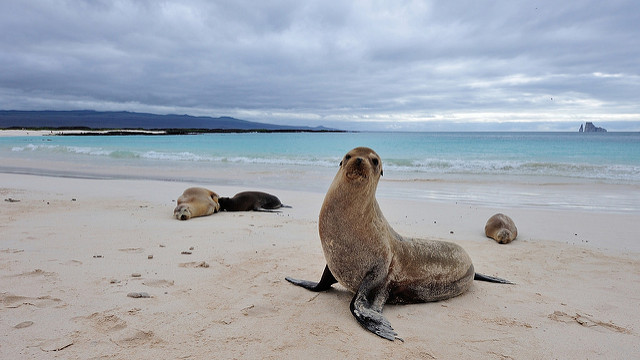
Credit: Matt Kleffer, via Flickr
In 2010 the United Nations set a goal to preserve 10 percent of the ocean by 2020. Research has shown that when waters are protected, fish supply and biodiversity greatly improve. This leads to more sustainable fisheries.
Yet a recent study questions whether a 10 percent target is ambitious enough – and by extension, even effective.
Published in the journal Conservation Letters, lead authors Bethan O’Leary and Callum Roberts analyzed 144 studies that looked at the most effective coverage of marine protected areas (MPA’s). They found that a majority of studies concluded that a far larger portion of the ocean – at least 30 percent – should be the new target.
Marine reserves are widely acknowledged as essential for protecting fish stocks and preserving biodiversity. The UN Convention on Biological Diversity states: “Well governed and effectively managed protected areas are a proven method for safeguarding both habitats and populations of species, and for delivering important ecosystem services.”
Approximately four percent of the ocean is currently protected.

Credit: Pauline Mak, via Flickr
But why would 30 percent coverage be more effective than 10 percent? The study looked at several objectives that are crucial for MPA’s to work best, from protecting biodiversity, to minimising the risk of population collapse, to satisfying many stakeholders.
When the 144 studies were combined, O’Leary and Roberts found that 37 percent was the optimal MPA coverage to meet the previous objectives. Moreover, when ocean protection was less than 10 percent, only three percent of the objectives were met.
“While achieving 10 percent coverage by 2020 is extremely ambitious politically, our research strongly indicates that 10 percent is only a waypoint towards effective ocean protection,” writes the authors.
Daniel Pauly, Principal Investigator with the Sea Around Us, believes the 30 percent goal is a good compromise between the UN target of 10 percent and another ambitious goal set out by renowned biologist E.O. Wilson – at 50 percent. In his new book, Half Earth: Our Planets Fight for Life, Wilson writes that half the planet’s terrestrial and marine areas must be preserved to stem the well-documented loss of biodiversity.

Credit: guenter from munich, via Flickr
E.O. Wilson is not alone with his large goal. Another study, by Sea Around Us collaborator Rashid Sumaila, suggests it would be beneficial to completely end fishing in international waters, also termed the ‘high seas.’
The study, published in Scientific Reports, states that ending fishing on the high seas would not only have a positive effect on global catch, but would help biodiversity and equity. The fish from international waters would be caught only when they venture into the 200 mile Exclusive Economic Zones (EEZ) of maritime countries.
Because less fish would be caught in the high seas, they would be able to regenerate, and thus a greater number would enter the EEZ’s. This spillover effect would not only be higher than present catches in the high sea, but would also lead to a more equitable distribution of these catches, presently made by a few countries with distant-water fleets.
Both the Sumaila and O’Leary/Roberts papers suggest similar conclusions: the current target to protect 10 percent of the oceans is admirable but not sufficient. And this conclusion is echoed by Pauly and Wilson.
But changes could happen soon. Both studies come before a UN Preparatory Committee on March 28, which will look at how international waters can be best protected. Pauly hopes the meeting will provide meaningful results.
“I want them to create a legal framework that would enable at least part of the high seas to be protected. Right now there is no such framework,” he said.

